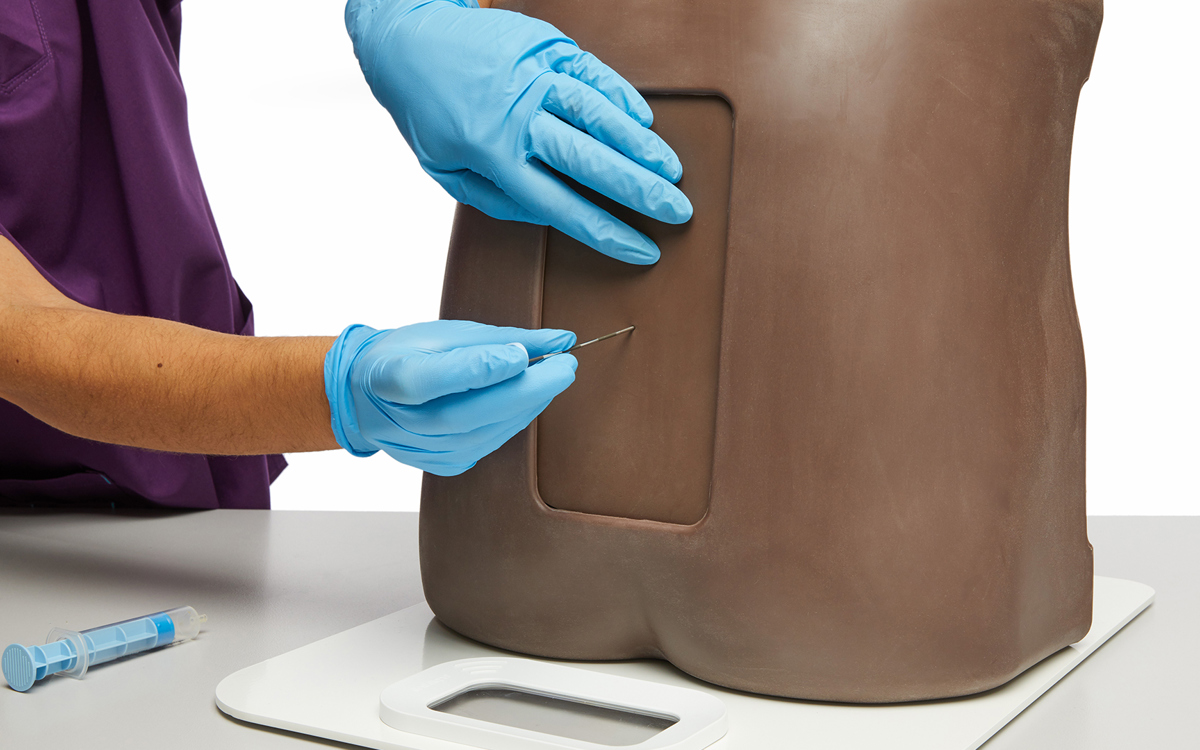Learning the Skills Associated with Lumbar Puncture and Epidural
When thinking about getting a needle stuck in our back, most of us would likely feel a little anxious and have a few questions about the need for such a procedure. What would be highly reassuring is to know that the person performing the task has done it many times and is confident in their abilities.

Two procedures that require a needle to be inserted into the spinal area are lumbar puncture and epidural. Although used for different reasons, the procedures are similar in technique and skill acquisition.
Lumbar puncture (LP), first performed in 1891, is a procedure that is learned in undergraduate medical school and practiced by many different medical specialties. The procedure is ordered for patients of all ages, mostly “for diagnostic sampling of the cerebrospinal fluid (CSF) to evaluate for suspected infections of the central nervous system, hemorrhage, neoplasm, or inflammatory disorders”.1 The CSF samples are taken from the subarachnoid space (also called the intrathecal space) of the spinal column. Another reason a lumbar puncture might be performed is to inject medications into the intrathecal space for short term pain relief, certain kinds of chemotherapy, or other therapeutic treatments.
Although medical students have a “high motivation to learn”2, a study published in December of 2020 states that “>60% of students report poor comfort levels for most skills”.2 The comfort level the students seek is often found in the simulation center where they can master a skill through repeated deliberate practice; and what is most encouraging for both students and patients is that new research focused on LP training for medical students shows that their “theoretical knowledge and confidence level showed significant improvement after simulation training” and that the “success rate of the first LP in patients was higher in the LP simulation group compared to the control group”.3
Epidural injections were first performed in 1901 as a safer alternative than general anesthesia at the time.1 Although very close anatomically, the epidural space is not the same as the subarachnoid (or intrathecal space). This diagram shows the anatomical locations of each:

Epidural injections may be single-dose or connected to a pump for continuous infusion of medications that aid in pain relief. In surgery, an epidural may be used instead of general anesthesia for certain procedures below the waist and remain after surgery for postoperative pain management. In labor & delivery, more than 50% of women use epidural anesthesia to decrease the pain of contractions.4 Epidurals may also replace general anesthesia in some cases during a Cesarean Section, allowing mom to stay awake to experience the birth. Epidural injections are also used in pain relief clinics to offer patients a more long-term solution to chronic pain in joints often caused by arthritis. Like the lumbar puncture procedure, placing an epidural requires learning how to properly insert the needle using ultrasound or anatomical landmarks. Unlike the LP, placing an epidural is a procedure completed only by certain specialties, such as Anesthesia or Pain Medicine.
The Limbs & Things Lumbar Puncture Model is designed for the novice learner. It features replaceable tissue inserts, durable spine and anatomy that accurately recreate the feel of puncturing the dura and the collection and measurement of CSF. Its separate spine and replaceable tissue mean the model is a cost-effective way to train large numbers of students. The Advanced Epidural & Lumbar Puncture Model allows training in both Lumbar Puncture and Epidural training. Featuring two epidural inserts: standard, and an advanced version with steeper spine, the model is ideal for both early and advanced training for more complex procedures. This model also features optional fat pads to fit below the skin to increase realism and difficulty for trainees.
References:
1: Techniques of lumbar puncture and intrathecal and epidural injections
2: Medical Students Comfort with Procedural Skills Performance Based on Elective Experience and Career Interest
3: Positive effects of lumbar puncture simulation training for medical students in clinical practice
4: American Pregnancy Association: Epidural - Everything You Should Know About It
Did you like this article?
Remember to share on social media and tag us below!

